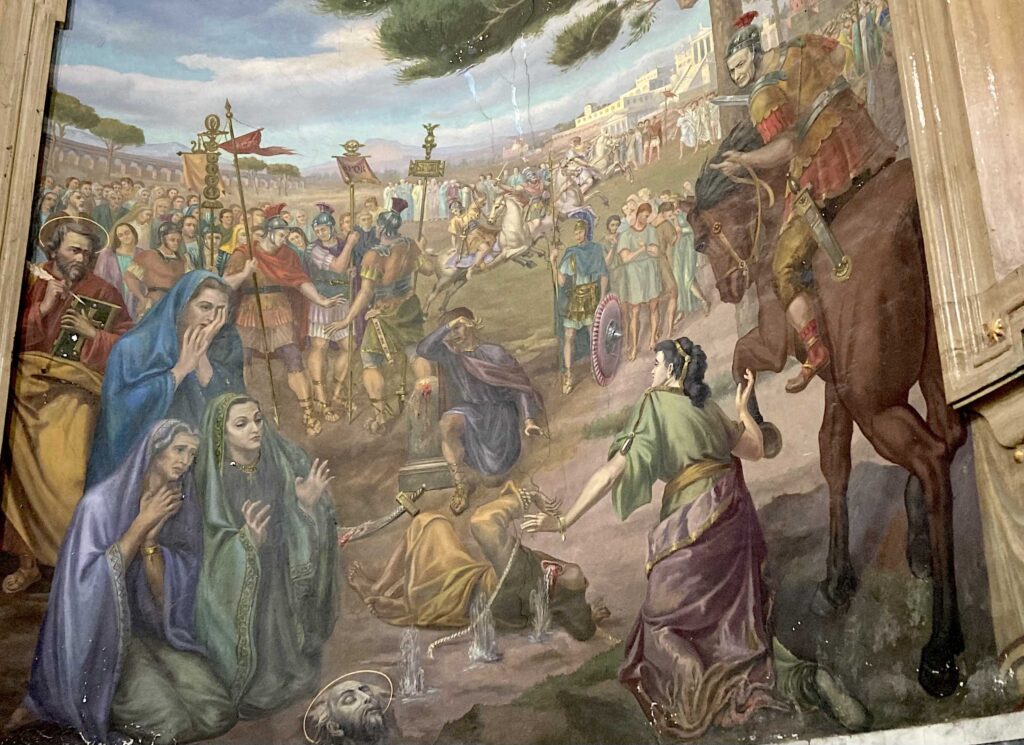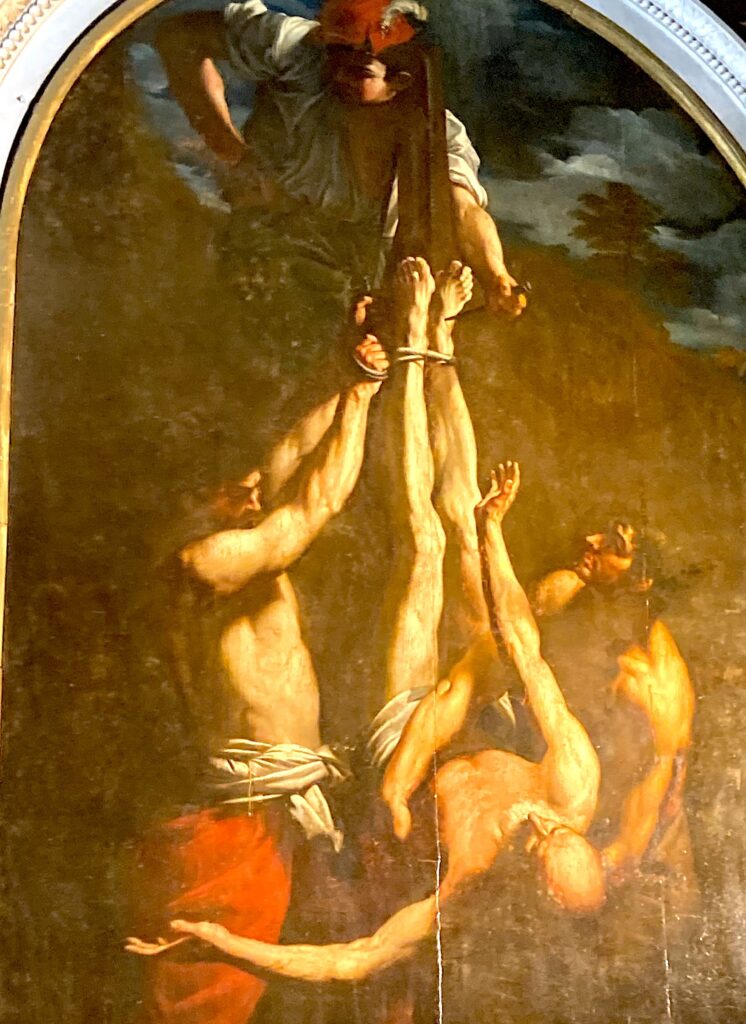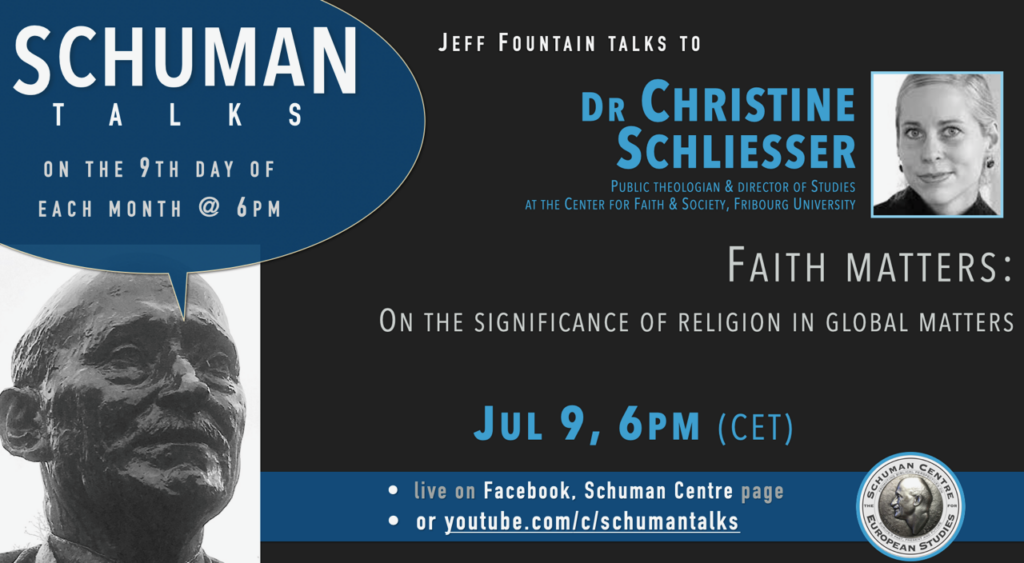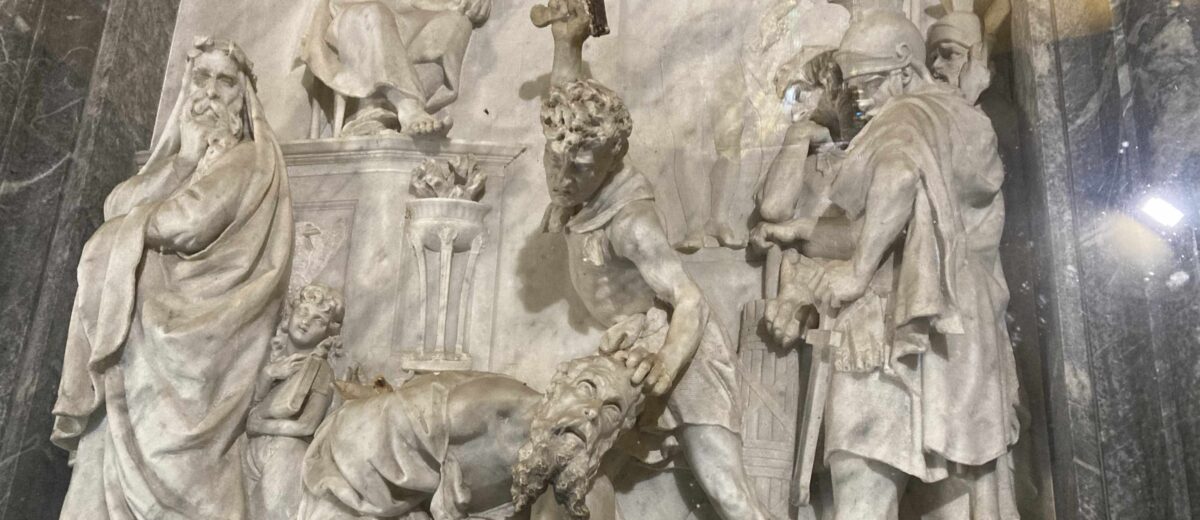Persecution, torture and murder of Christian leaders by authoritarian rulers in occupied Ukraine as we reported last week, and in many places in the world today, has been a constant feature of the Christian story since the birth of the church.
Almost all of the apostles were martyred, according to tradition, although the only biblical record we have is that of James (Acts 12:2). The Acts of the Apostles ends with Paul still alive after reaching Rome in 60 AD, preaching about the Kingdom of God. Which is a bit odd, as estimates of when Luke wrote Acts range from 70 to 120 AD. Paul’s death is placed somewhere between 64 and 68 AD.
While in Rome this week attending a think tank gathering, I bussed outside the city itself to visit the traditional site of Paul’s martyrdom in the grounds of a Trappist abbey complex, the Tre Fontane – Three Fountains.
The abbey complex consists of three churches and a monastery: a large seventh-century Roman basilica, a baroque-style church housing relics of those martyred under Diocletion in 299, and lastly, at the end of a long tree-lined avenue, another baroque chapel on the traditional site of Paul’s death.
A large marble plaque over the door of the chapel adds the detail that ‘three springs miraculously gushed out’ of the earth – following the tradition that Paul’s head bounced three times after falling on the ground. Inside the chapel, three equi-distant baroque fountains enshrine this macabre detail and still flow with water, albeit undrinkable. (Pre-christian sources noting the pre-existence of the springs contradict the official traditional version).
Options?
Several artworks are on hand to aid pilgrims in their contemplation of the apostle’s martyrdom. A marble rendition of Paul with his head on the chopping block, shows his executioner ready to strike with axe in hand (see photo above).
In a wall painting behind the central fountain, blood gushes out of Paul’s headless body, surrounded by armoured soldiers and worshipping women, and three new springs of water show where his grey, lifeless head had bounced, still complete with halo lying nearby.

Another seemingly unrelated painting shows a man being crucified upside down, his feet already nailed to the upright post by the attending soldiers. Obviously this is Peter, whom tradition tells us was martyred in this manner on the same day as Paul, given as June 29, 67AD, during the persecution of Nero, some twelve kilometres away on the site of St Peter’s in the Vatican.
The earliest sources however do not affirm their martyrdom on the same day. The later version of a joint apostolic martyrdom tradition aimed to strengthen the Roman Church’s claims of apostolic authority. Yet both Peter and Paul were thorns in Nero’s side as trouble-makers declaring ultimate allegiance to Jesus as Lord, rather than Caesar. They were subversives, and needed to be eradicated to maintain Pax Romana; just like non-Russian Orthodox believers in Russia and occupied territories seen to undermine Russkiy mir.

The painting’s presence reminds us that crucifixion would also have been Paul’s fate, had he not been a Roman citizen. To us moderns, both options are gruesome. Yet beheading was considered quick and merciful – assuming the executioner was competent and his axe was sharp. As a Roman citizen, Paul was given the ‘quick and merciful’ option. Crucifixion was a slave’s death, the most humiliating form of execution imaginable. Andrew, Peter’s brother, was also crucified, although earliest sources described him as being tied rather than nailed, on a Latin (vertical) cross rather than the saltire X-shaped version which developed in the Middle Ages.
For those of us who have grown up so familiar with stories and images of the cross and the crucifixion, we are not shocked, horrified and repulsed by the reality it represented. Neither do we realise how saturated our culture is with the symbolism of the cross. What if Jesus had been a Roman citizen and had been ‘mercifully’ beheaded? No Union Jacks. No Nordic, Maltese, Georgian or Swiss flags with crosses. No golden crosses around necks. No green crosses on pharmacies. No Red Cross. No rows of white crosses in military graveyards. No cross on Charles’ crown, nor on the KLM logo. No tattoos of crosses. No football players crossing themselves…
Values?
Two weeks ago in Fribourg, Switzerland, I heard Tom Holland, British author of ‘Dominion’, tell of visiting a town in northern Iraq where ISIS had been committing genocide against Christian and other minorities, including crucifying their victims.
Reflecting on the use of crucifixion to subdue enemies, Tom realised how repulsed he was by the Roman cruelty. His values were not Roman, but where did they come from? he wondered. What had changed since Roman days that had made human dignity, human rights, compassion, tolerance, justice and equality the values enshrined in European law?
This was the start of his pilgrimage towards embracing the message the first Christian martyrs had brought to Europe, and his discovery of the revolution their message had spread across this peninsula we often call ‘The Continent’, at the cost of more martyrdoms.
This is the reason that autocrats and tyrants still try ruthlessly to repress those who through their message of love, truth and justice work towards the long-term overthrow of the established disorder of things. It’s a message worth dying for.

Till next week,



